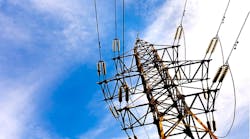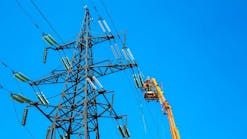Electric Grid Architecture Today
The United States economy, security and its citizens are highly dependent on a reliable and resilient electric system with growing expectations and interactions by customers. Customers are growing less tolerant of outages of tens or hundreds of minutes per year on average with voltage fluctuations that interrupt a customer's digital world. Customers also are resisting paying a growing percentage of household expenses for their electricity use.
The transformation of the architecture of the grid began in the 20th century from isolated networks recognizing the economies of scale of interconnection to share resources and the diversity of demand. Electricity prices dropped with technology and interconnection. Then demand slowed and prices rose. Demand-side management, PURPA (1978), deregulation and market development attempted to stem the tide of rising prices. Investment in the transmission and distribution grid slowed due to lower demand growth (and efficiencies) and the confusion (from an investor's standpoint) in the transmission space with the advent of independent system operators (ISOs) and regional transmission operators (RTOs).
Deregulation created a horizontal unbundling of the grid in some portions of the country separating electricity supply from end use interconnected by transmission and distribution (wires). Retail providers emerged to create aggregation vehicles to help customers interact with the marketplace. Other portions of the country remain in a vertically integrated paradigm from supply to end use. Price in some portions of the country has been a primary driver of deregulation, with lower price areas of the country remaining status quo to preserve their price position.
Environmental regulations, renewable penetrations and the advent of shale gas have created the perfect storm for the electric grid. Fuel transformation in the United States has only begun creating the changes to the grid that are needed to ensure our nation's electricity future.
Investments in the transmission grid have increased substantially soon after the Energy Policy Act of 2005 and FERC's actions in response, coupled with more robust regional planning. The blackout of 2003 in the Northeast, the precursor of EPAct2005, was a rude awakening to the need to improve reliability with mandatory standards. Investments have essentially doubled per annum in transmission from the 1990s and early 2000s. Recent transmission investments have spiked to address the fuel transformation that is occurring in the United States.
The transmission grid has enjoyed technology enhancements, including the proliferation of phasor measurement units that track grid operation in millisecond fashion rather than the previous paradigm of every few seconds. Power electronics advancements have enabled newer HVDC technology (using voltage source converters) for better applications for underground and undersea development. Composites have enabled advance conductor to carry greater power flows over the same rights-of-way with greater efficiency. Other monitoring devices have created dynamic ratings of transmission and corridors for better performance.
The term "Smart Grid" was born to enable a grid for markets from supply to customer, customer interaction, and ultimately customer choices. Many see smart grid as limited to advanced customer meters, but it is much more than that. It is essentially an architecture that enables markets and customers to transform the grid, with a communications umbrella overlaying the traditional wires.
Security and resiliency have come to the fore with Super Storm Sandy, cyber attacks and the Metcalf incident. Many took the grid for granted until these vulnerabilities made the 24/7 news, causing some to seek the insurance of back-up generators and other means.
Distributed energy resource penetrations have increased due to technology advances (particularly in solar power), subsidies, customer choice and the security that some service will be maintained during outages. The term microgrid enters the scene given distributed energy resource technological advancement, combined heat and power opportunities, and micro-turbines.
A game changer is energy storage at the macro-grid level and the micro-grid level. The grid is based on a load factor that is approximately 60% built for the one-day peak served just in time primarily in the summer. Energy storage can help mitigate that on a macro-grid basis, can enable variable resources, and bring price points down for distributed energy resources.
In the middle of this revolution of grid architecture is distribution. Distribution investment has kept pace with demand growth, but it has not advanced as rapidly as transmission, smart grid concepts, and distributed energy resources. Super Storm Sandy has enabled hardening reinvestments in some areas, but this investment is limited. Distribution returns have not kept pace with transmission returns creating some pressures in capital allocation processes. Lower demand growth has stymied asset renewals, as well.
Urban centers enjoy modern distribution networks that may be able to handle the revolution, but many urban center networks employ cable that is many decades old, with some dating back more than 50 years. Rural and suburban distribution is largely radial with limited availability to connect another radial should the primary be outaged. Most distribution is not enabled with supervisory control and data acquisition (SCADA) enjoyed by transmission. Distribution is primarily a run to failure asset with lack of ability to finely regulate voltages on feeders that have highly variable distributed energy resources.
Today, many question the utility business model amidst the revolution occurring to advance customer choices, meet environmental regulation, improve reliability and keep costs down in real terms. How can the utility increase investments in a model based on stagnant usage? Will other entrants emerge? Will customers be happy with today's reliability metrics? How can a modern grid emerge with prices kept in check?
Electric Grid Architecture Tomorrow
One must look at the grid not in a "top-down" mode, but in a "bottom-up" mode to envision a future electric grid architecture — a view from a customer's perspective. What will the customer want from tomorrow's grid?
-
Reliability improved substantially (near universal power supply)
-
Choice of supply with transparency and reach
-
Smartly interactive (either active, or set it and forget it, i.e., EPRI's notion of "prices to devices")
-
Efficient, sustainable and affordable
The opportunities to solve this puzzle will dictate winners from losers. Status quo will not be acceptable. Inertia will play a role given it may take a generation to change the grid architecture to accomplish, but it can be accomplished...
Transmission will advance to enable the choices of supply and market reach. Although some see distributed energy resources as the death of transmission, it is quite the reverse. Transmission enables market reach across many states for aggregators and customers. A distributed energy resource may achieve a better price point (or better lease arrangement) if a customer or aggregator can use it in a greater marketplace. If energy storage is involved, greater benefits can be achieved.
Transmission will enable the fuel transformation in the United States. According to EIA's 2014 Annual Energy Outlook, central station resources will remain a strong player through mid-century enabled by transmission. The combination of diverse central station resources, distributed resources, energy storage opportunities, and the growing variability of supply input, will require a next generation energy management system (EMS) for grid operators (cite EAC paper). Add interactions with distribution systems, more control points, meta-data from phasor measurement units and the need for this next generation EMS is absolutely clear.
Some say that net energy for load will decrease over time due to efficiencies and distributed energy resources creating less need for transmission. In EIA's 2014 Annual Energy Outlook, future uses of electricity are cited as a potential to increase demand. The United States has many choices for energy use. Electricity may be chosen to offset other forms of energy in transportation (e.g., electric vehicles and greater electrification of rail) and industrial processes for greater sustainability. In addition, although per capita energy use may decline per EIA's report cited above, population is projected to increase, and with GDP correlation still strong, a stronger economy can yield greater demand. Lastly, if electricity in a prosperous society is viewed as comfort rather than a commodity, greater use may occur. This is not to say wasteful use, but greater more thoughtful and environmentally friendly use.
Distribution will advance in visibility, control and network ability. One can imagine the emergence of grid operators at the distribution level more actively interfacing with transmission grid operators and markets. Aggregators can reach the resources at the roof-top level and have them play in the greater market enabled by a more advanced distribution grid interfacing with the breadth and scope of markets enabled by transmission. Demand response will lose its limited definition and be able to engage in more than just demand reduction (enabling more affordability to customers).
The transformation at the distribution level would be extraordinary. There are about 5 million miles of distribution in the United States and each feeder would advance in voltage regulation, visibility, automation and networking ability. The technology is available today, but there is a need for a next-generation grid operating system at the distribution level that interfaces seamlessly with the next-generation EMS by transmission grid operators. Add the marketing side of the equation, and one can see the transaction velocity not unlike financial markets today.
The supply side is a bit easier to envision with central station resource players and distributed energy resource players. Whether utilities own the resources or not can be subject to state regulations. Unregulated players (including unregulated utility subsidiaries), can develop various models for distributed energy resources, but making them affordable without subsidy will require them to play in the broader marketplace, especially if enabled by energy storage. Critical for the supply side are interconnection standards that allow all to technically ride through grid issues, to regulate the grid attributes (e.g., voltage) at their interface, and to communicate seamlessly with grid operators and marketers.
The customer in this architecture has greater choices to address affordability. One can imagine a customer in this digital age pursuing a universal power supply option at their site with distributed energy resources with energy storage or a micro-grid option. Having market reach for their choice provides mitigation for rising prices to accommodate their needs. This is happening today at larger commercial and industrial sites. The customer may pay a fixed charge for grid connection to enable this business model, and may be managed by an aggregator to help. As one looks at more efficient operations, smarter appliances, hot water heaters, HVAC systems, etc., can be managed in one equation to interface with supply choices and market choices adding to the affordability goal.
Since many systems convert AC to DC and back again, there are opportunities for efficiencies, ride-through ability and possible creation of a parallel DC networks to complement AC.
The DOE can be helpful as convener or R&D enabler for the following gaps (in addition to DOE initiatives for smart grid and energy storage):
-
Next-generation EMS and next-generation distribution grid operating system.
-
Next-generation distribution automation.
-
Interconnection standards (macro and micro level), both communications and full grid interaction ability of any device connected to the grid.
-
Exploring greater efficiencies in commercial and residential applications to limit conversions between AC and DC. For example, development of standards to enable DC networks at commercial and consumer levels to complement AC.
-
Exploring greater efficiencies with conversions of other forms of energy use to electricity.
It is the desire of the Electricity Advisory Committee to see the DOE as a catalyst for creation of discussion and R&D efforts to enable grid architecture modernization to enable customer choices, reliability improvements and market development for affordable options.


